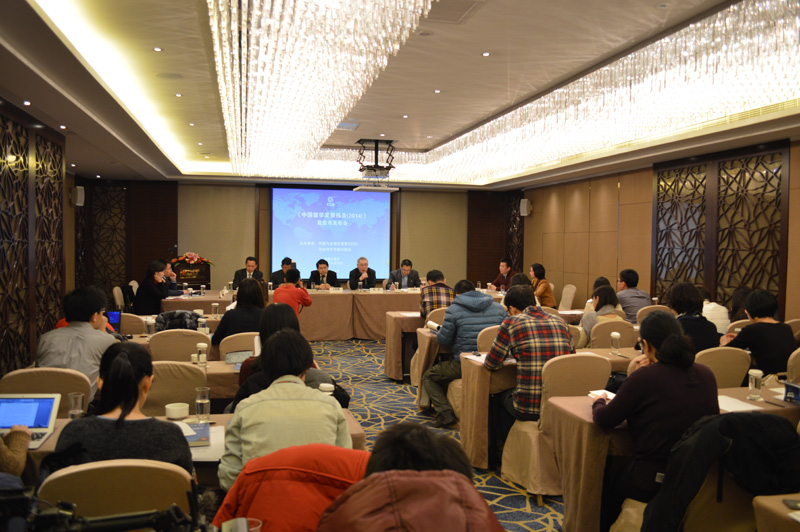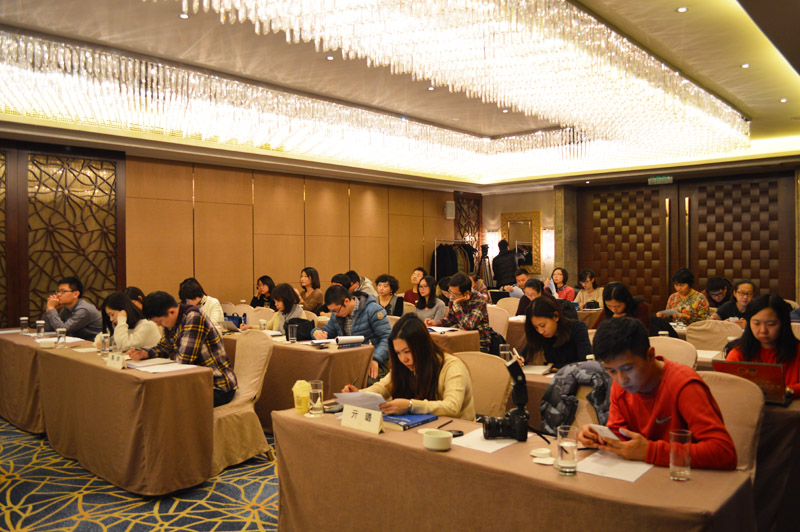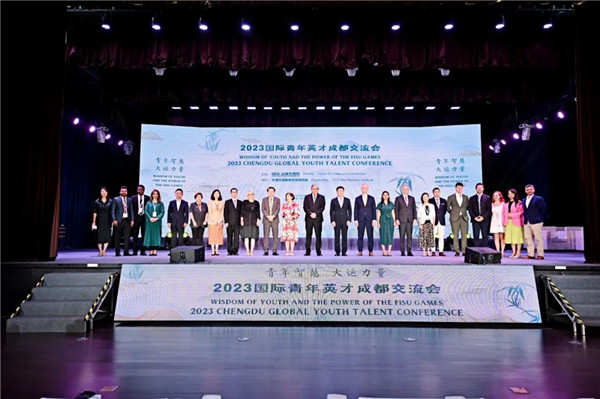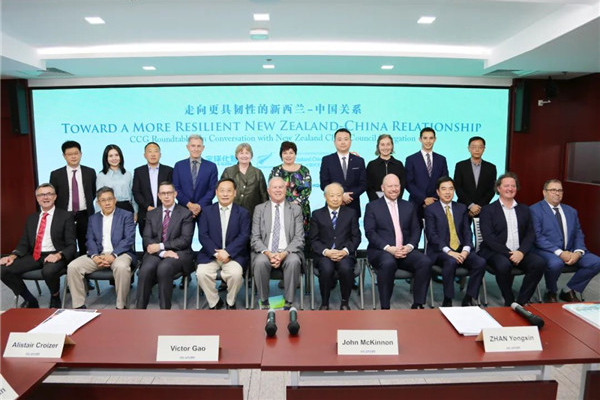CCG Launches its 3rd Bluebook Report on Chinese Studying Abroad in 2014
Dec. 18, Beijing – The Center for China & Globalization Thursday released its 3rd annual bluebook report on Chinese students studying abroad, revealing that more and more of these individual are choosing to be educated in foreign countries and detailing the constraints on China becoming the destination of choice among foreign students.

At the joint book release ceremony with the Social Academic Press (China), CCG Director Dr. Wang Huiyao noted that study abroad is a key way in which China can develop a talented workforce with the international perspectives and experience required to meet the demand of its economic transformation in the new era of Chinese companies going global.

“China will be in a dire need of developing an internationalized talent pool within its workforce over the next 30 years as the country transforms itself into an innovation-driven economy. Thus figuring out how to integrate and leverage the abundant global resources to cultivate such talent is becoming a top priority for China’s economic development,” said Dr. Wang.

Study abroad is receiving heightened attention from the top Chinese leadership. At the first national working conference on studying abroad held on Dec. 12-13th, President Xi Jinping emphasized that it is crucial for China’s overall economic development to formulate strategies for utilizing the resources available both at home and abroad in creating a skilled and talented workforce. Premier Li Keqiang also pointed out at the conference that global perspectives and innovative measures are needed to promote study abroad and attract more highly qualified individuals to China to promote its economic development.

Echoing the top-level policymakers, the Chinese Study Abroad Report 2014, which is an exhaustive year-long research study containing in-depth surveys on this issue, details the new trends among Chinese studying abroad and analyzes the policies of foreign universities and countries in attracting international students. At the same time, the report covers the issues of foreign students and Sino-foreign joint educational programs in China. Based on its findings, the book proposes a number of policy measures to increase the “study abroad bonus” that can benefit both the students who choose to be educated overseas and China as a whole.

Those who attended the book release ceremony included:
…
Global population of studying abroad continues to rise as China remains the No.1 source of international students

According to the book, the number of Chinese studying abroad has continued to rise, after doubling between 2000 and 2012. This is especially true for students pursuing higher education. Worldwide, international students currently account for just a little under 2% of the total student body of institutions of higher education. However, this percentage is much higher in some most popular destinations for foreign study, particularly Australia (18%) and Britain (17%).

At the same time, the preferred destinations for study abroad are becoming more diverse. Based on OECD’s statistics released this September, America, Britain, France, Australia and Germany remain the top five destinations, but their share of the global market declined from 55% in 2000 to 48% in 2012. By contrast, UAE emerged as the third most popular destination for the students from Arab countries. In the southern Saharan region of Africa, the number of international students also rose from 18% in 1999 to 28% in 2012. At the same time, the combined share of international students taken by China, Malaysia, South Korea, Singapore and New Zealand has already risen to 6% of the global total.

CCG research shows that in 2013, China still remains the largest source of international students in the U.S., Britain, Australia, Canada, Japan, South Korea, Singapore, Germany, Sweden, and New Zealand. In America, for example, the share of Chinese students among those from foreign countries rose from 11% in 2006 to 28.7% in 2013, according to the data from the International Education Institute. Canada has become the most popular destination for Chinese high school students, hosting 32% of them, followed by the U.S., Australia, and Britain.

Turning to the detailed findings, the report provides in-depth analysis of the reasons why more Chinese students are going abroad at younger age. The overriding factor is receiving higher education to facilitate career development. They believe the foreign high-school education and exam system provides them with flexibility and options, thereby serving as a better springboard into top-flight universities. The research also finds that for the Chinese students enrolled in high-school and bachelor degree programs, at least one of their parents has a college or university degree and holds down a high-level job paying a relatively good income. This trend will gain more momentum as the affluence and ability of Chinese families to consume more continues to grow and foreign countries offer greater incentives to attract international students.

Another trend revealed in the book is the changing composition of the Chinese students in different tiers of education in the U.S., the most popular destination of Chinese seeking to study abroad. The share of Chinese post-secondary students undertaking postgraduate education decreased from 52.1% in 2010 to 43.9% in 2013. By contrast, over the same period, the number of the students in undergraduate programs rose 8.5%. These trends show that more Chinese students and their families recognize and appreciate the value of the higher-education in foreign countries.

Turning to the factors determining the decision of Chinese students to study abroad, the research shows that the main motivation driving this behavior is the desire to improve their competitiveness in finding a good career. But unlike past years, the environment has also emerged as a key factor influencing their decision to study abroad. Over 30% of the people CCG surveyed in 2013 said they prefer to study in the countries with a better environment, compared the 20% in 2012. As for academic subjects, business remains the top choice for Chinese students, followed by science, technology, engineering, and math. Language study is also now gaining greater popularity, as more people go abroad to study at younger age.

In addition, a greater and more diverse array of services is now being offered to facilitate study overseas by Chinese students. Firms in this area now not only include intermediate agencies, but also a full range of service providers assisting with foreign language education, standardized exam preparation, financial aid, insurance, and post-graduation career development.

Five measures proposed to enhance China’s appeal to foreign students
In sharp contrast to the strong growth of Chinese studying abroad, the number of the foreign students in China still remains low. CCG research shows that there were 356,499 international students in China in 2013, an increase of 8.6% over the previous year. However, less than one-third of these individuals were actually enrolled in degree programs. According to OECD criteria, while the share of international students in developed countries is usually above 8%, it stands at just 0.4% in China.
CCG believes that one highly effective approach to obtaining high quality individuals to work in China to improve the talent level of its workforce involves attracting greater numbers of foreign students to study in the country. To wipe out the talent “trade deficit,” the book proposes five policy measures. These include relaxing controls on internship and job opportunities for foreign students after graduation, accelerating educational reform to establish modern and international academic and management systems in Chinese universities, bringing in international teaching faculty so that more courses are instructed in foreign languages, promoting joint educational programs, and launching pilot programs.
In particular, the book proposes reforming tuition pricing systems as a way to strengthen Chinese schools’ commitment and capacity to host more foreign students. The government currently caps the tuition fee for foreign students at around RMB 30,000 per year, while the one-year tuition fee for a bachelor degree program in UCLA is around RMB 230,000. This government mandated tuition pricing system discourages the schools from investing in and developing the academic programs needed to attract foreign students. The system should be reformed to make the market the determining factor in setting tuition levels for foreign students.
LocationBeijing





